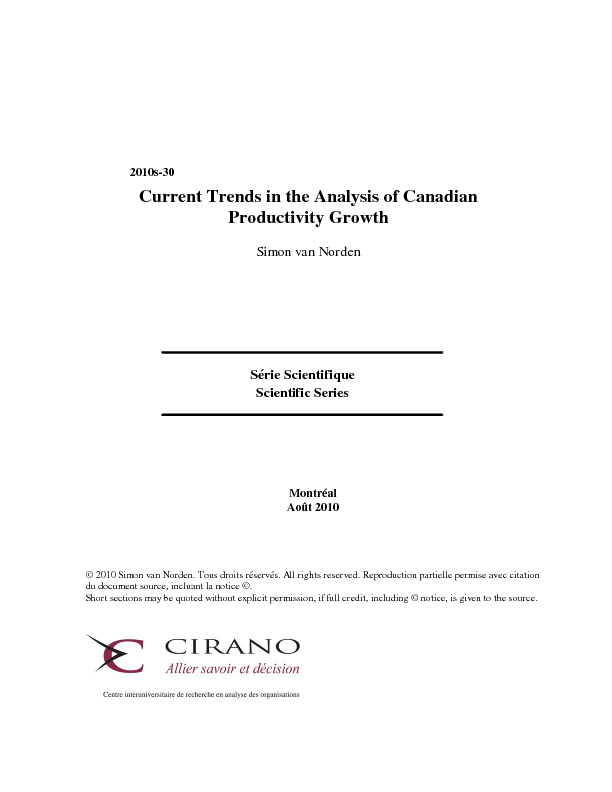Current Trends in the Analysis of Canadian Productivity Growth
For more than a decade, debates over the impact of new information technologies on trend productivity growth rates have played a key role in the formulation of monetary policy in many countries, including the United States and Canada. However, the question of whether the trend growth rate of aggregate productivity has changed significantly is rarely examined formally. This paper examines the latest aggregate labour productivity data for Canada using a new testing approach specifically designed to detect recent changes in trends. In addition to showing the strength of the evidence for changes in long-run trends, it considers the effect that data revision and changing sample period has had on inference about structural changes. In an appendix, it investigates how large such changes must be before they can be detected and to what degree detection tends to lag the structural change. Evidence of a decline in the trend rate of labour productivity growth in Canada since 1990 is mixed. In particular, conclusions vary considerably from year to year as data are revised and as the accumulation of observations after purported breaks changes initial perceptions. The instability of test results suggest that policymakers need to use extreme caution in interpreting claims of changes in labour productivity trends and highlight the uncertainty that they face.
[ - ]




